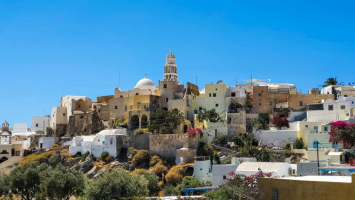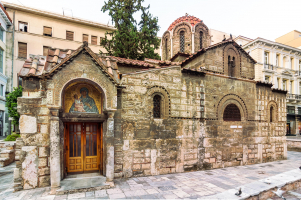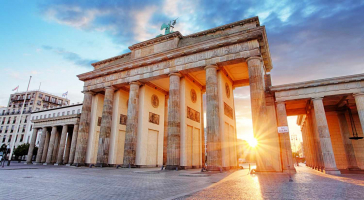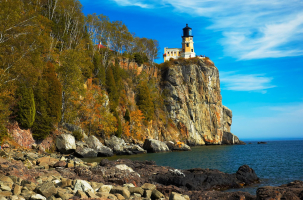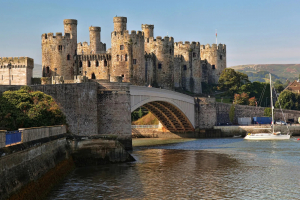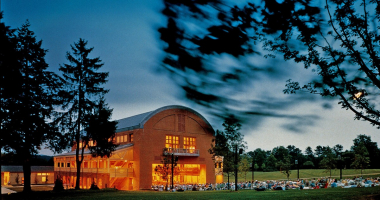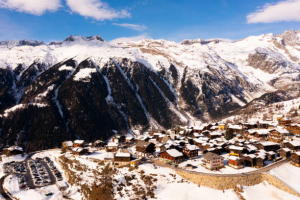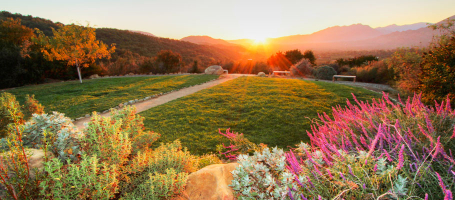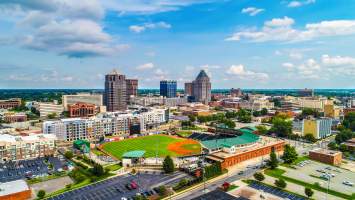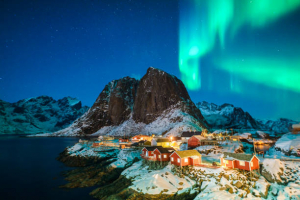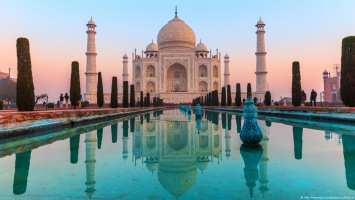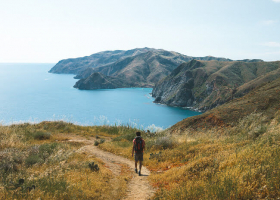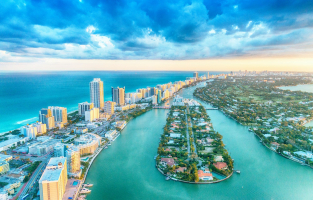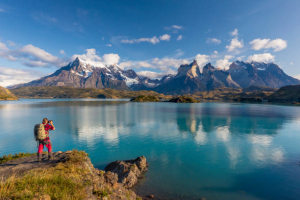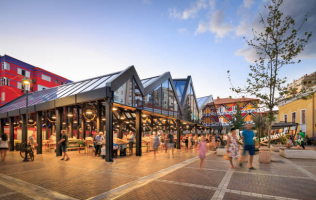Top 16 Best Things to Do in Greece
The land of Greece is one infused with ancient mythology and if you like archeology, history, art, and philosophy then a trip to this fascinating country is ... read more...not to be missed. Greece is made up of a series of idyllic islands that are surrounded by jet blue seas and covered in dainty white buildings, and you will also find crumbling ruins, engaging museums, and pretty coastal towns aplenty. Here’s a complete guide to help you plan a fun-filled trip to Greece.
-
If you are a fan of Greek mythology, Mount Olympus should not be skipped from your schedule. It is likely one of the most famous mountains in the world. The Mountain of the Gods is another name for Mount Olympus, which is also known as the Home of the Gods in Greek Mythology. Greece's tallest mountain, this stunning one is an amazing 9,570 feet tall.
As you ascend, you might picture the legends associated with Mount Olympus, which is recognized in Greek mythology as the location where Hades controlled the Underworld and where Zeus sat on his throne.
If you want to climb the mountain, you will need to travel to Litochoro where you can trek part or all the way to the top depending on your ability and fitness levels. There are several day hikes on Mount Olympus that are the perfect spot if you want to absorb yourself in some of Greece’s backcountry, but if you’re a true lover of the outdoors, you can spend a few days and hike to the top of the mountain. For the hike, you’ll be rewarded with impressive views, a lush Greek forest, and attractive water features.
Location: on the border of Macedonia and Thessaly
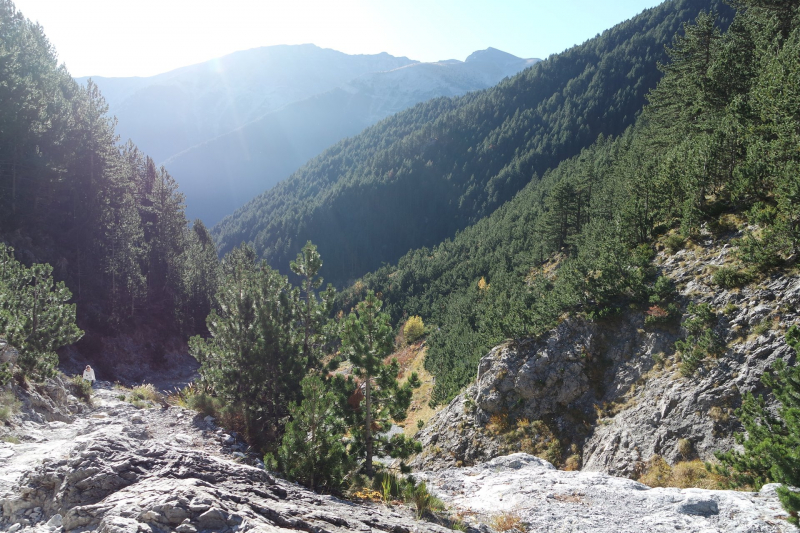
Rove.me 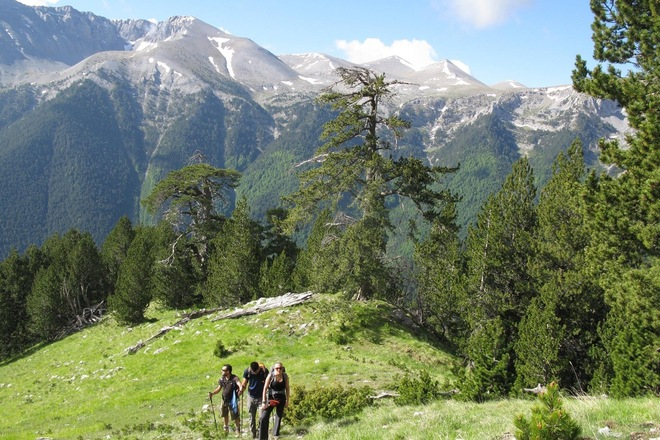
Yakki -
If you are in Greece then this is probably the number one attraction not to miss the complex, made from glittering marble, used to be the site of the famous statue of Athena who was also the goddess of Athens.
Anyone remotely interested in ancient architecture can marvel at the Doric columns and the spectacular temples and the Acropolis is lined with pathways that let you walk around at your leisure and enjoy the highlight of this monument.
The Athens Acropolis is the largest ancient Greek architectural complex that is still standing today. This iconic UNESCO world heritage site is perched atop a hill and is a feast for the eyes of everyone who enjoys history and ancient Greek ruins. It is a must-see monument.
The most important structure on the Acropolis, the Parthenon stands erect atop the hill's summit and represents the timeless beauty of ancient Athens. Visit the Acropolis Historic Museum, which preserves the artifacts from this archaeological site, to discover more about Greece's ancient past. Then, proceed to the Ancient Agora, which was a well-known gathering spot in the ancient city, located on the northwest side of the Acropolis.Location: on a rocky outcrop above the city of Athens
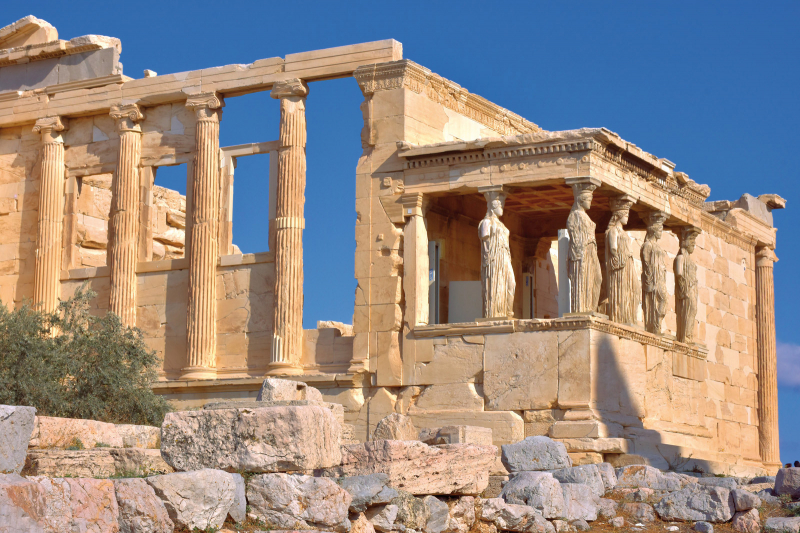
Visit Meteora 
The Tour Guy -
Located near Karavomilo is Melissani Cave which is a craggy cave known for its beauty. Also known as the Cave of Nymphs, this sea cave will make you feel like you’re out of this world altogether. The cave is almost 4 kilometers long and was formed when water eroded the soft rocks over the centuries.
Inside the cave is the equally famous Melissani Lake, an underground body of water that was discovered in 1951. In ancient times the cave was dedicated to the Nymph Melissani who gave the cave its name.
You can take a tunnel down into the cave before boarding a boat and gliding through the lake's azure waters. Take a boat tour through the caves and be in awe of the gorgeous blue water as the sunshine filters through the cave's openings and chambers and causes the water to glitter enchanted. Don't let this once-in-a-lifetime opportunity pass you by.
Location: island of Kefalonia, northwest of Sami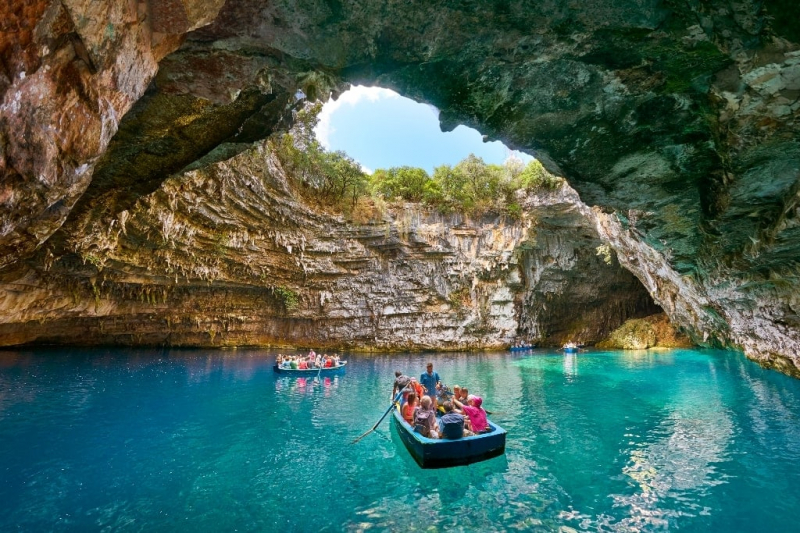
Greece Travel Ideas 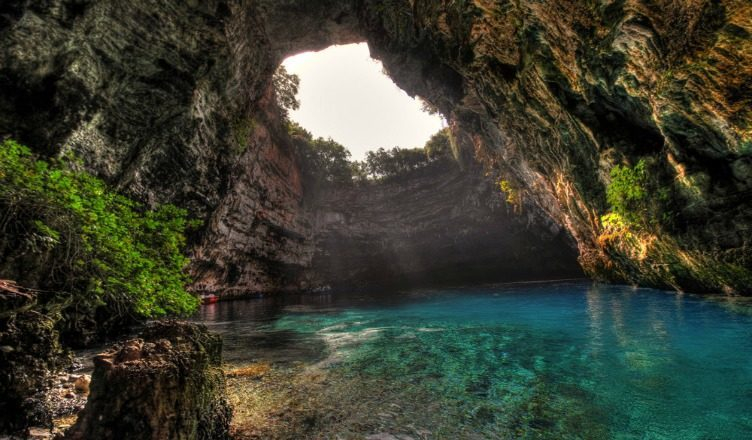
The Yolo Moments -
Navagio beach, commonly known as Shipwreck beach, is a well-liked tourist destination. The shipwreck of a vessel thought to have transported contraband cigarettes in the early 1980s is situated in an exposed bay on the Zakynthos coast, an Ionian island. The beach is known as "Shipwreck Beach" since there is just one ship that has become stranded there. The waters leading to Navagio Beach, which is located on an island cove, are an impossible shade of blue.
With stunning blue waters, it is most definitely a sight for sore eyes. Also noteworthy on Zakynthos island are the gorgeous blue sea caves that are like nothing you would’ve ever seen before.
Unfortunately, the beach can only be reached by boat, so it’s recommended to make reservations with a touring outfitter as soon as possible to ensure you will be able to see this spectacular attraction during your visit.
You can also spend a few days enjoying the island of Zakynthos, which, while small, has a vibrant city and stunning beaches that are far easier to access during the remainder of your trip.
Location: on the coast of Zakynthos, in the Ionian Islands of Greece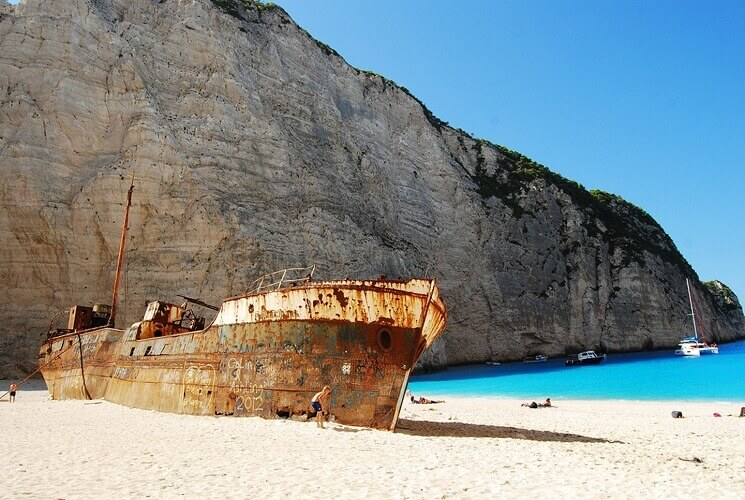
YOTOMU 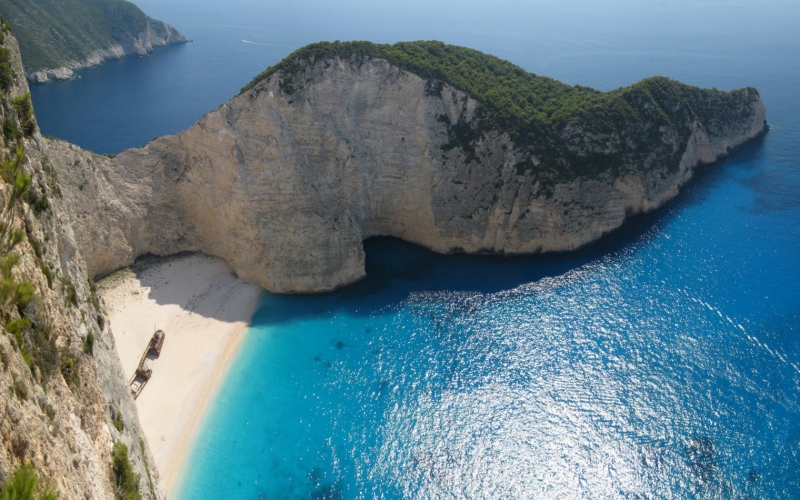
Greek Air Taxi Network -
The monasteries of Meteora, which are perched on soaring rock formations, are famous. The Meteora Monasteries, which are found in Thessaly on the Greek mainland, are perched on enormous rock formations that were created as part of a rare geological occurrence millions of years ago. One of the calmest things to do in Greece is to visit Meteora, a well-known UNESCO world heritage site.
Six of the 24 monasteries that were constructed atop these "columns of the sky" by monks who first settled here in the 11th century are still in use today. The monasteries are just ten minutes by car from Kalabaka, and while the ascent of the rocky outcrops may be challenging, it is unquestionably worthwhile.Meteora is one of the most impressive sites in the entire world, and if you find yourself even in the remote vicinity of this attraction, you should make every effort to see it.
You can hike around Meteora, visit the various monasteries, and enter the monasteries to get a feel for the historical significance of this site. If you’re a history buff, you may appreciate a guided tour of the site for the most educational impact.
Location: near the town of Kalabaka at the northwestern edge of the Plain of Thessaly near the Pineios river and Pindus Mountains

Matt Barrett's Greece Travel Guides 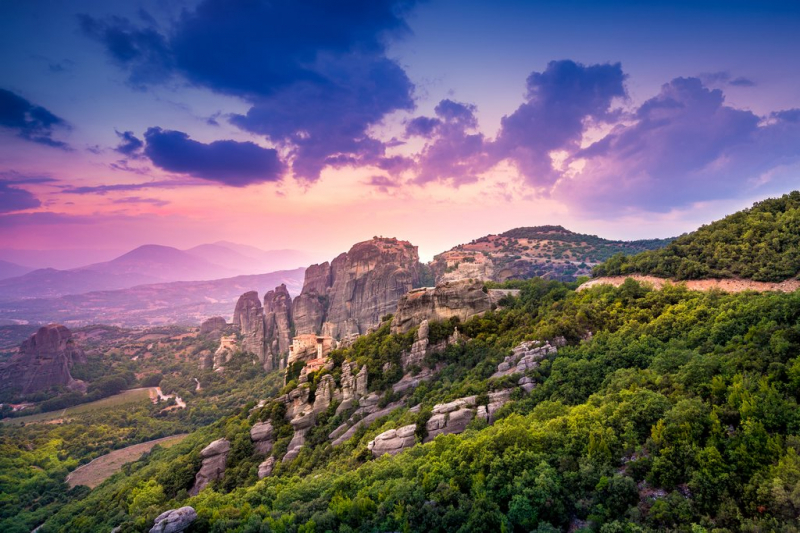
kimkim -
The ancient Palace of Malia, which dates to 1,900 BCE, is one of Greece's crowning achievements. Malia, which is located on almost 7,500 hectares of productive land, is the third-largest Minoan palace in Greece. Even though it is now fully in ruins, exploring the palace is still among the most well-liked activities in Greece.
There are a variety of exhibition halls here as well as photographic galleries and scale models of how the complex would have looked in days gone by. Once at the ruins, one can note a clearly mapped plan of how the palace one stood- a central courtyard surrounded by storage rooms, a theatre and a crypt to the east, and so on. Archaeological excavations have yielded some invaluable treasures from the site as well, which are now housed across Greece’s many museums. Look out for some of its signature pieces such as the Kernos Stone which is a disk with 24 holes in it.
Location: North Coast of Crete, East of Heraklion
Entry fee: 6 € per person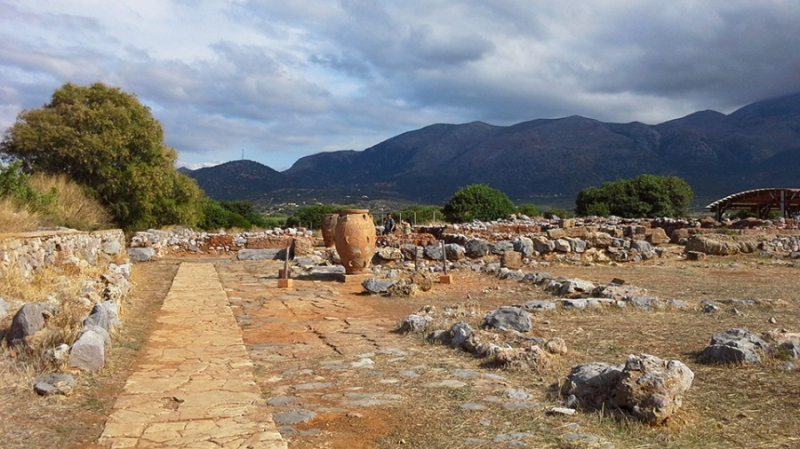
Cretazine 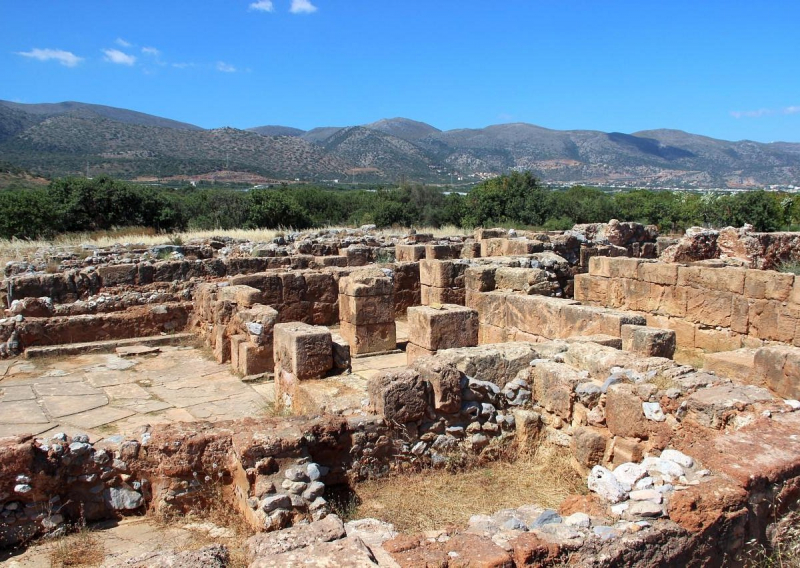
Tripadvisor -
Mycenae is one of the oldest UNESCO World Heritage sites in Greece. Built on a hill, this antique city is well-known for being the home of the legendary Trojan War hero Agamemnon, considered one of the most powerful kings of Ancient Greece.
Homer claimed that Mycenae was built by Perseus who was the son of Zeus and Danae and it belonged to the Royal House of Atreus. Whatever the real story, we know that Mycenae was founded in the 6th century BC and some of the highlights here include the mighty Lion Gate and the royal cemetery.
Along with lesser homes that once held renowned antiques like the Warrior Vase, you will also find the Agamemnon Palace, the Great Court, and other structures. To find out more about the Mycenaean civilization and this significant time in Greek history, you can also go to the Mycenae Archaeological Museum.
Location: on a small hill between two larger hills on the fertile Argolid Plain in Peloponnese, Greece
Entrance fee: full: €12, reduced: €6 (it includes entrance to the archaeological site and the museum)
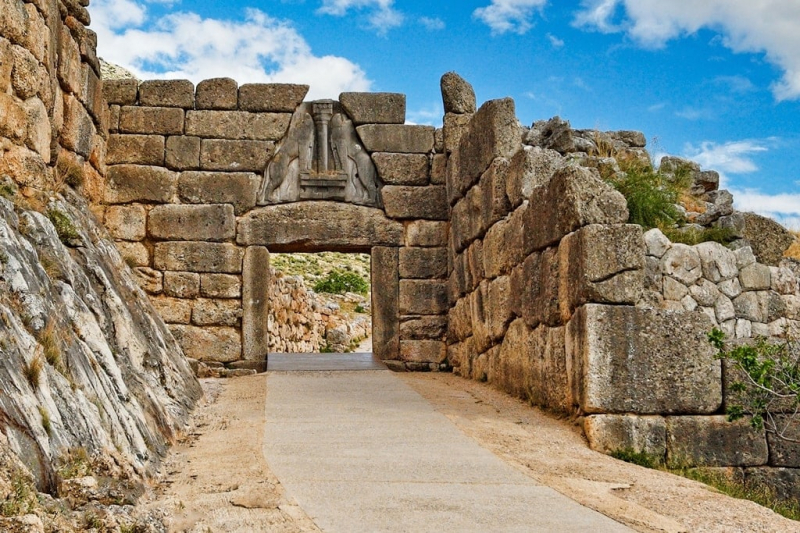
Greece Travel Ideas 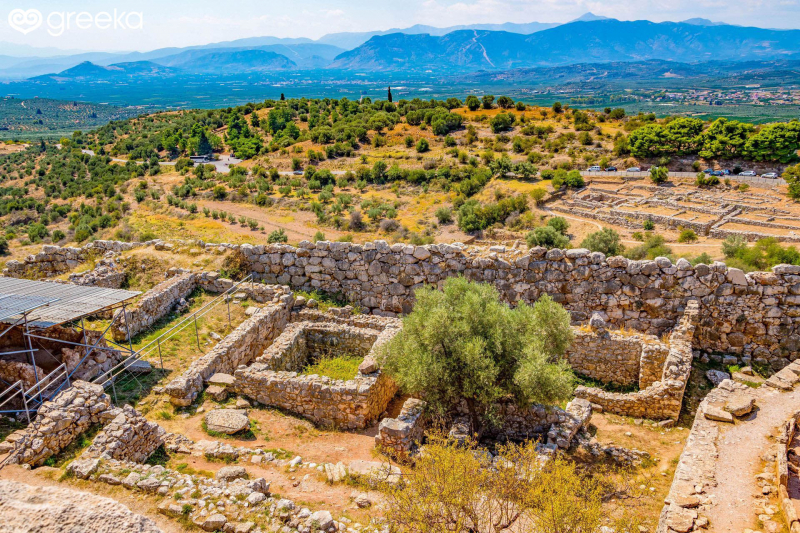
Greeka -
Lake Plastira is something unusual in Greece which is known for being blessed with a plethora of natural beauty. Located in central Greece, Lake Plastira is one of Greece’s largest man-made lakes. It features a peaceful and attractive terrain that mimics the Swiss Alps, causing it to often be referred to as “Little Switzerland.”
What makes this lake different is that it is manmade although this doesn’t make it any less impressive. The lake is surrounded by oak and chestnut trees and you can go canoeing or rafting here as well as horse riding or hiking along the trails around the lake.
Visitors are enthralled throughout the year by this magnificent blue lake with its freezing waters, encircled by snow-capped mountains and lush pine trees in its surrounding countryside. This lake is the ideal winter getaway in Greece as it is located at a high altitude.
Location: Karditsa regional unit, near the city of Karditsa, Greece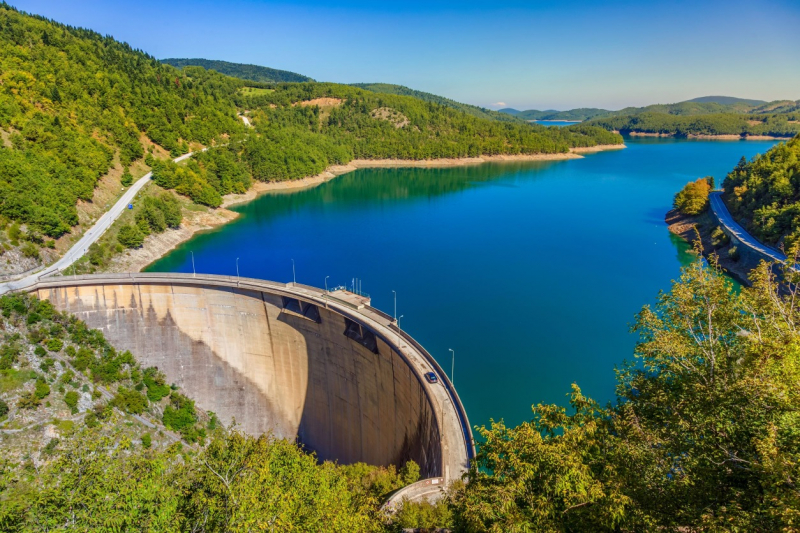
travel.gr 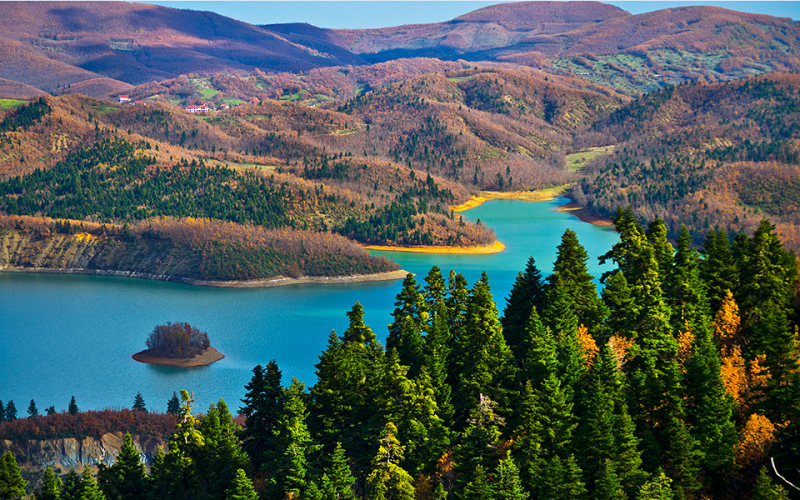
Greece Is -
Delphi, one of many UNESCO World Heritage Sites in Greece, is a tremendously well-liked tourist destination, and it's easy to see why once you go. Delphi, which is located on Mount Parnassus's flanks, was formerly a well-traveled pilgrimage site for people who came there to pay respects to Apollo, the ancient Greek god of healing, music, light and prophesy.
Nowadays, you may discover temples, a spectacular stadium, a theater, and charming historical remains. Followers would travel here to seek wisdom from the Oracle at Delphi.
The Delphi Ruins are one of the most renowned ancient sites and the most important shrine in Greece. It served as a historic place of worship for the Greek deity Apollo. The sanctuary, which was which historians believe dates back to 1400 B.C., housed the Oracle of Delphi and the priestess Pythia.
These archeological ruins have major historical significance, as it is where ancient Greeks would come to seek counsel with the Oracle at Delphi. The site’s remains are nestled in Mount Parnassus, west of Athens.Location: between two towering rocks of Mt. Parnassus, known as the Phaidriades (Shining) Rocks, in the Regional unit of Phocis in Central Greece.
Entrance fee: full: €12, reduced: €6
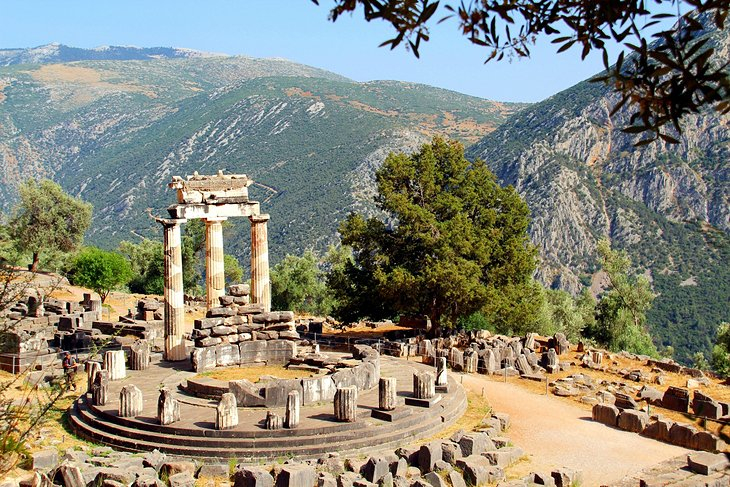
PlanetWare 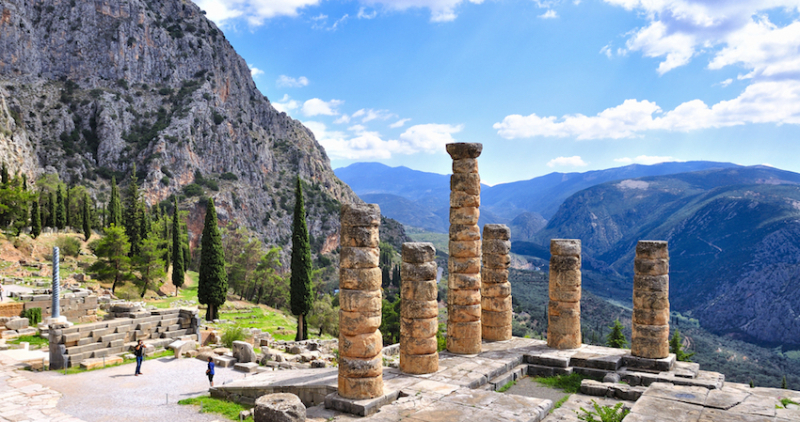
Matt Barrett's Greece Travel Guides -
In the touching distance from Psiri and Plaka, the National Garden is a welcome green buffer between ancient Athens and the modern sea of concrete. Commissioned by Queen Amalia in 1838 as the royal garden of the adjacent palace (which is now the Greek Parliament building), the National Garden is a picturesque respite from the busy city.
The National Garden was formerly the Royal Garden, opening up to the south of the Old Royal Palace and ordered by Amalia of Oldenburg at the end of the 1830s.
One of the few shaded areas in the middle, it's wonderful for a stroll and for viewing ruins like columns and Corinthian capitals. The park's entrance is marked by the 12 palm trees the queen planted and is located on Leoforos Amalias (named for her), just a short distance from Syntagma Square. Bring your kids to the two ponds to see the turtles and ducks, and spend a few moments relaxing while lounging beneath the pergolas and avenue of tall palm trees. In addition to a botanical museum, the park features a small zoo featuring peacocks, birds of prey, wolves, and monkeys. And this being Athens, don’t be surprised to bump into some traces of the ancient city, like mosaics and columns.
Opening hours: from dawn to evening
Location: between the districts of Kolonaki and Pangrati, directly behind the Greek Parliament building (The Old Palace)
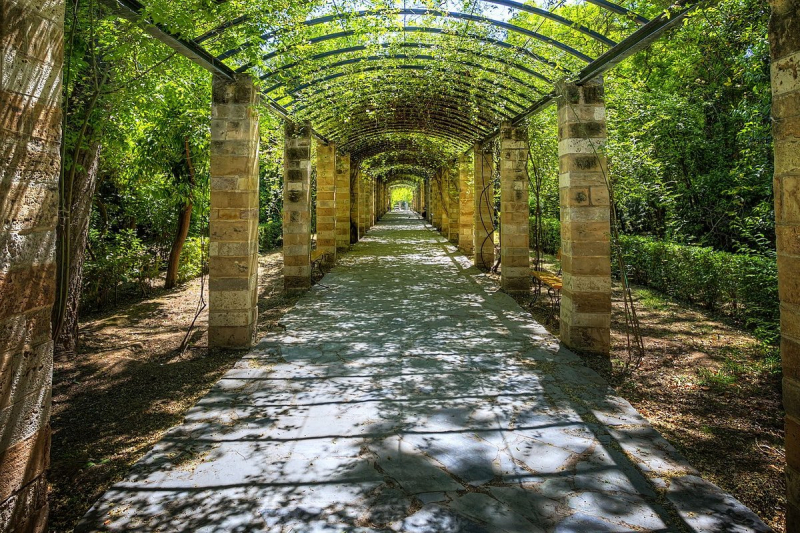
TripAdvisor 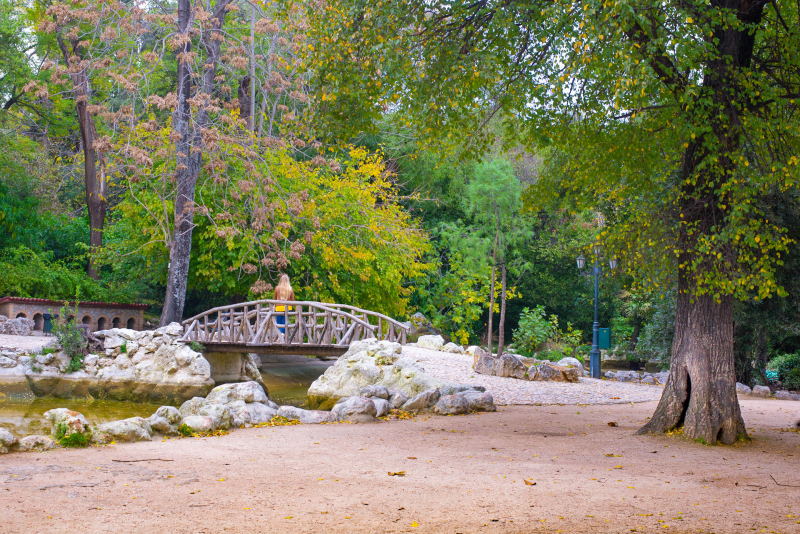
Discover Greece -
Thessaloniki, one of the oldest cities in Greece, is full of fascinating tales. Exploring Thessaloniki, which is dotted with lush gardens, lively marketplaces, and ancient wonders can be one of the most gratifying pastimes in Greece. The city can be explored in a variety of ways. Its landmarks could be explored on foot while following the road as it led from one jewel to the next.
The word halara, which loosely translates to "take it easy" or "it's all right," is one of Thessaloniki's best idioms. This seaside city with a laid-back attitude offers nightlife, art, and student culture. The upper town is a Byzantine maze, and history buffs can visit the neighboring Vergina Tomb of Philip II of Macedon to see its truly remarkable treasures.
There are a number of bicycling tours available here as well, with the trails curving to accommodate the city’s many attractions. One could spend a day here exploring only its many ancient sites, from the Arch of Galerius to Ancient Agora. Thessaloniki’s waterfront is widely regarded for its beauty as well, home to several of its prettiest gardens.
Location: Thessaloniki 546 35, Greece
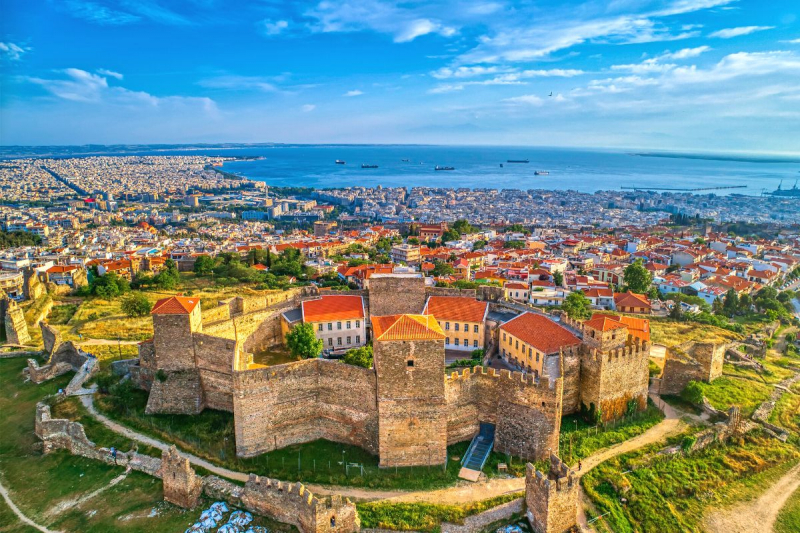
TourScanner 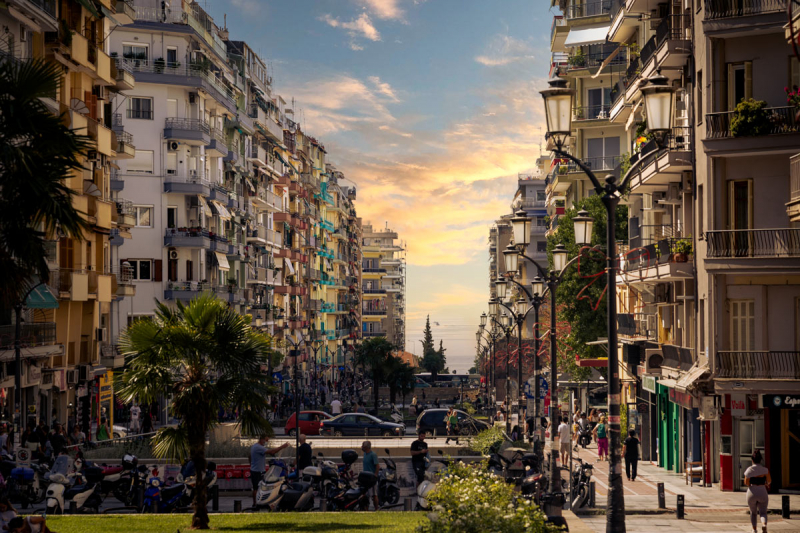
Worldwide Walkers -
There is no better place to sample Greek cuisine than in Greece itself, which is often regarded as having some of the best food in the entire world. Greece provides an amazing variety of delectables, from mornings with a Greek coffee and a Cretan bougatsa (flaky pastry stuffed with sweet or savory cheese) to evenings with ouzo and calamari.
Think of the healthful Mediterranean diet's fresh-pressed olive oil and sweet, in-season tomatoes with a ton of seafood when thinking of Greece's distinctive flavors. But there is also a ton of luxury, such as honey-layered baklava, crumbly country cheese, and slow-cooked roasts. Each area has its own specialties.
Whether you choose to dine at a five-star restaurant or grab a snack from a street vendor, this is the place to branch out and try new things. Much of Greek food use rich ingredients like olive oil, cheeses, meats, and spices, which means that the flavors are rich and delicious.
There are endlessly sweet and savory pastries, and you can enjoy dishes like pastitsio (Greek lasagna), moussaka, and spanakopita.
The Planet D 
The TravelPorter -
Greece is frequently considered an ancient country, but if you wish to discover its contemporary side, visit the Museum of Contemporary Art. You may find some incredible galleries here that feature a wide variety of internationally famous contemporary artists, as well as displays that are completely devoted to Greek painters, sculptors, and photographers.
The Museum of Contemporary Art, as its name might imply, is frequently kept out of the general public's view since it is thought to appeal to the eccentric or, at the least, the ignorant elite. Nevertheless, a visit to the museum shall certainly prove worthy of overcoming the inhibitions, being one of the most enlightening activities in Greece.
The museum with its stellar and eclectic installations of contemporary and modern art is a monument of delight to those with an active interest in the subject, and is just a short walk away from the “major” attractions nearby, chooses to appeal to the tourist-mass to bring them into the fold as well.
Location: Leoforos Kallirois Amvrosiou Frantzi, Athens, Greece
Pricing: Each adult ticket costs 8€, while a ticket for a teen comes at exactly half the price.
www.emst.gr 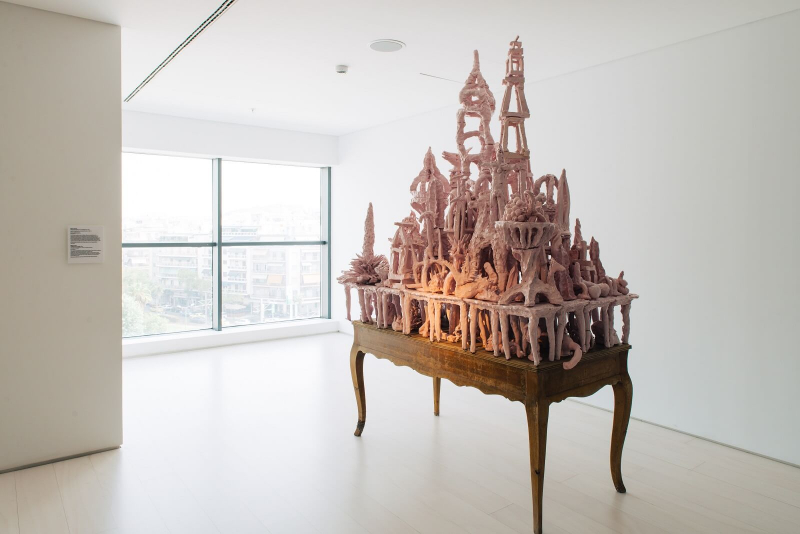
This is Athens -
The Greek landscape, as is fit, is riddled with as many secrets and nooks as its multifaceted lore, and the Corfu trail is one of those relatively less-known activities in Greece that demand your attention. The stunning island of Corfu is home to the Corfu Trail where you can go hiking, although don’t imagine a leisurely afternoon stroll. This hike is definitely for the backpackers and the ones that love the thrill of an elaborate adventure, and it compensates with its beauty as much as it requires your time and perseverance.
Despite being a trail without any "mountains to climb," it traverses the full of island of Corfu, taking in all of its villages, lakes, and typical country scenery. It runs from the southern to the northern tip of the island.
If you want to walk all 220 kilometers of the trail then it will take 8 to 10 days to walk along it and you will pass all kinds of landscapes along the way. Much of the trail is made up of dirt tracks and you will weave past turquoise lagoons and rise to scenic summits.
Location: starts in the south of Corfu island, in the town of Kavos. The hike ends in the north of the island, in Agios Spiridonas.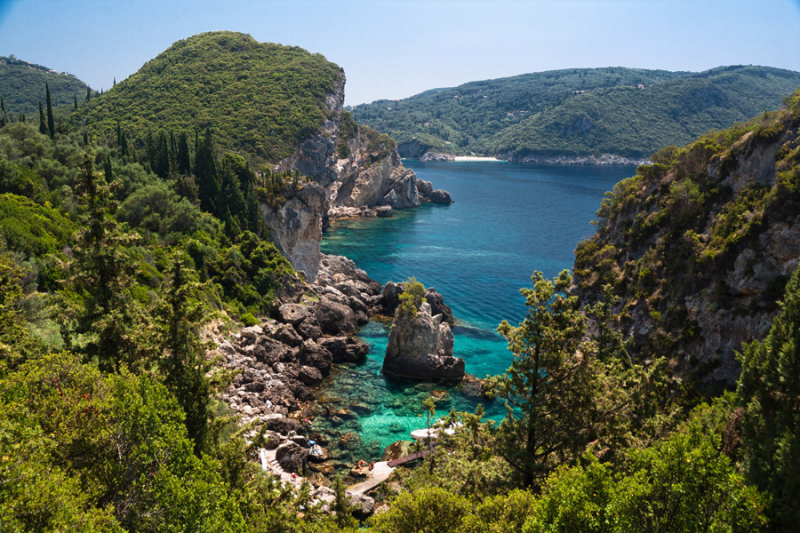
Walks Worldwide 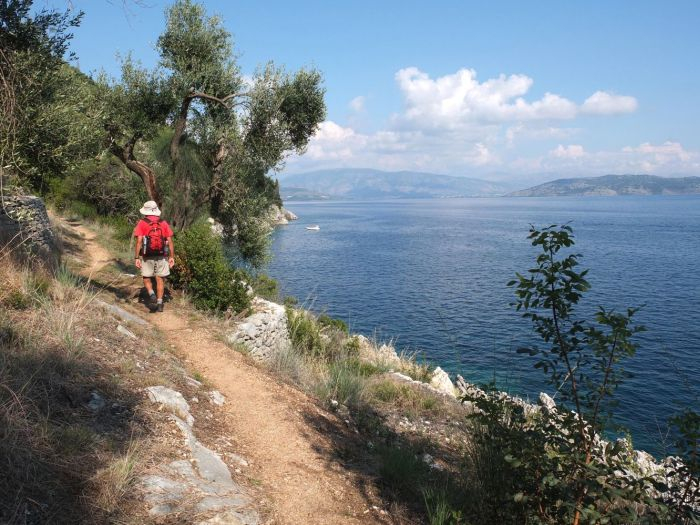
Wired for Adventure -
Greece's Crete island is home to some of the most beautiful beaches. The Balos beach in Crete is renowned for its white sand and turquoise-blue crystal-clear sea and is undoubtedly famous for its Mediterranean beauty. In the summer, travelers flock to Balos in droves because it is the ideal beach for swimming. In Crete, there are a number of beaches that allow for scuba diving, and we highly recommend checking them out.
The beach is made up of lovely lagoons that open up into azure waters, and because the water is so pure here, you can observe a variety of underwater life, including fish and crustaceans. This is one of the prettiest places in Crete to spend some time swimming or lounging in the sun, and you can hire sun loungers and parasols there.
The ideal way to reach Balos beach is by taking a ferry from Kissamos, which also boasts a scenic voyage with magnificent views of the coastline and if you’re lucky, a rendezvous with dolphins.
Location: on the north-western tip of Crete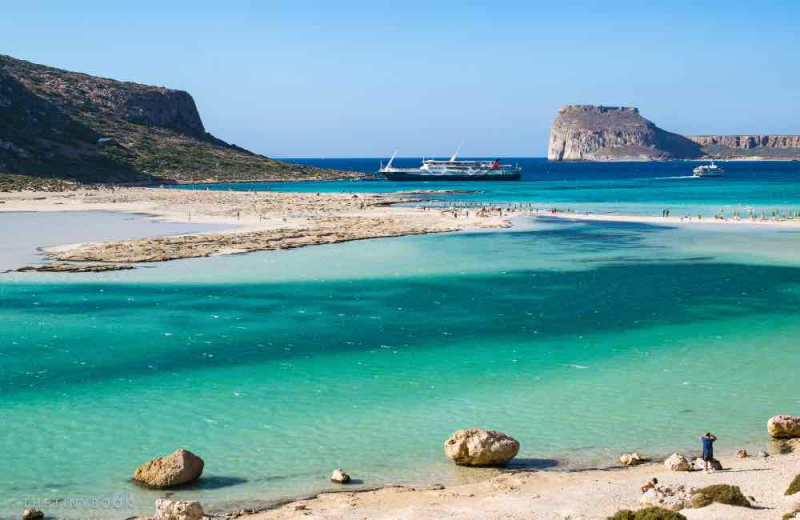
The Tiny Book 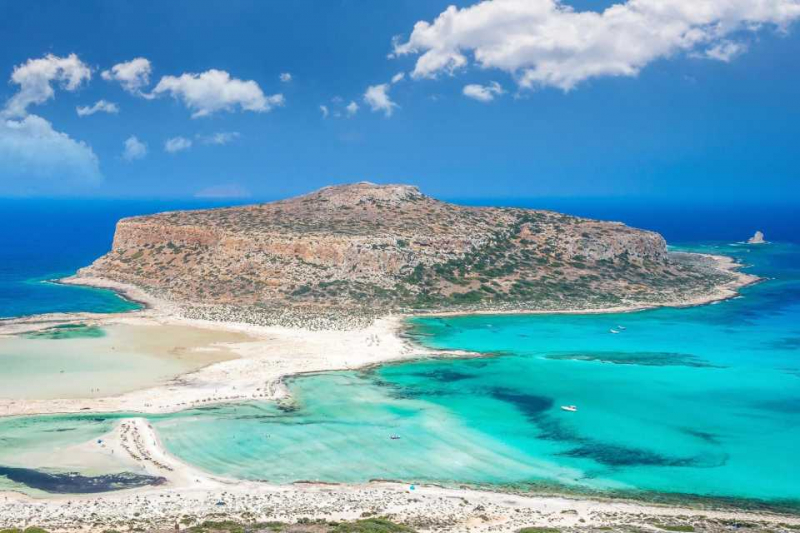
GetYourGuide -
If you thought the island of Mykonos would be a lovely but sleepy place where you could spend peaceful and restful evenings, think again. Although the island has historical attractions, Mykonos is known for its nightlife, which attracts more visitors than its beautiful beaches, opulent lodgings, and party atmosphere.
When the sun sets, be ready to hit the parties since Mykonos offers amazing architecture and amazing sandy white beaches with options for swimming and snorkeling in the turquoise-blue water.
Mykonos has tons of live music venues and draws famous DJs from all around the world and other A-list celebrities making the most of the island’s luxury hotels. Mykonos also features several fancy restaurants and great shopping.
The clubs can be seen slowly transforming from daytime beach clubs to evening sunset-watching coffee bars and finally to all-night ragers that can go on until 5 AM. Whatever time of day you visit a club, you’re sure to have an absolute blast.Location: in the northern part of the Cycladic island group in the Aegean Sea
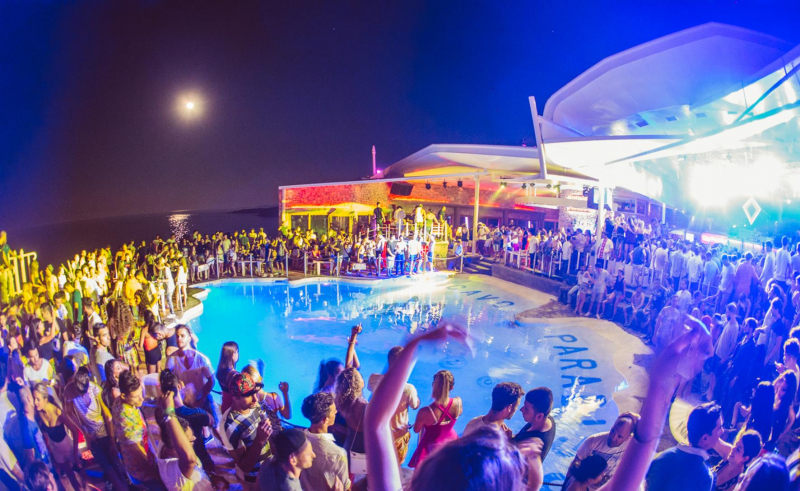
Nightlife City Guide 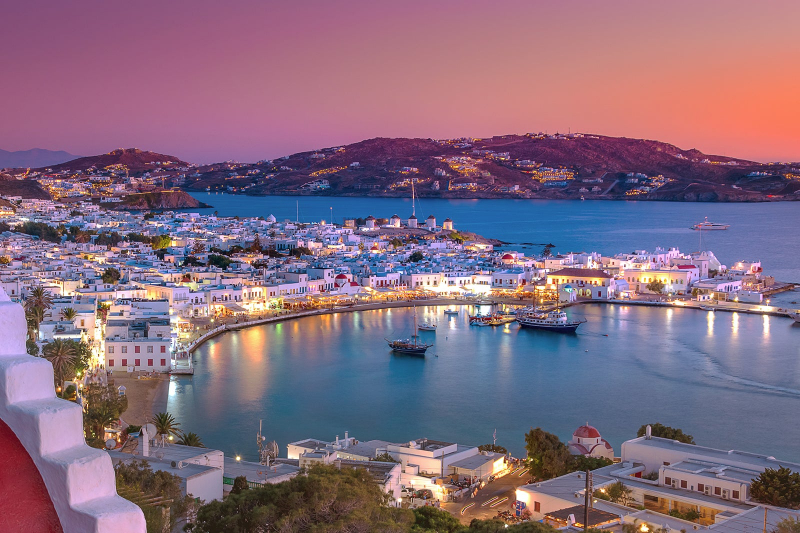
Hotels.com


















